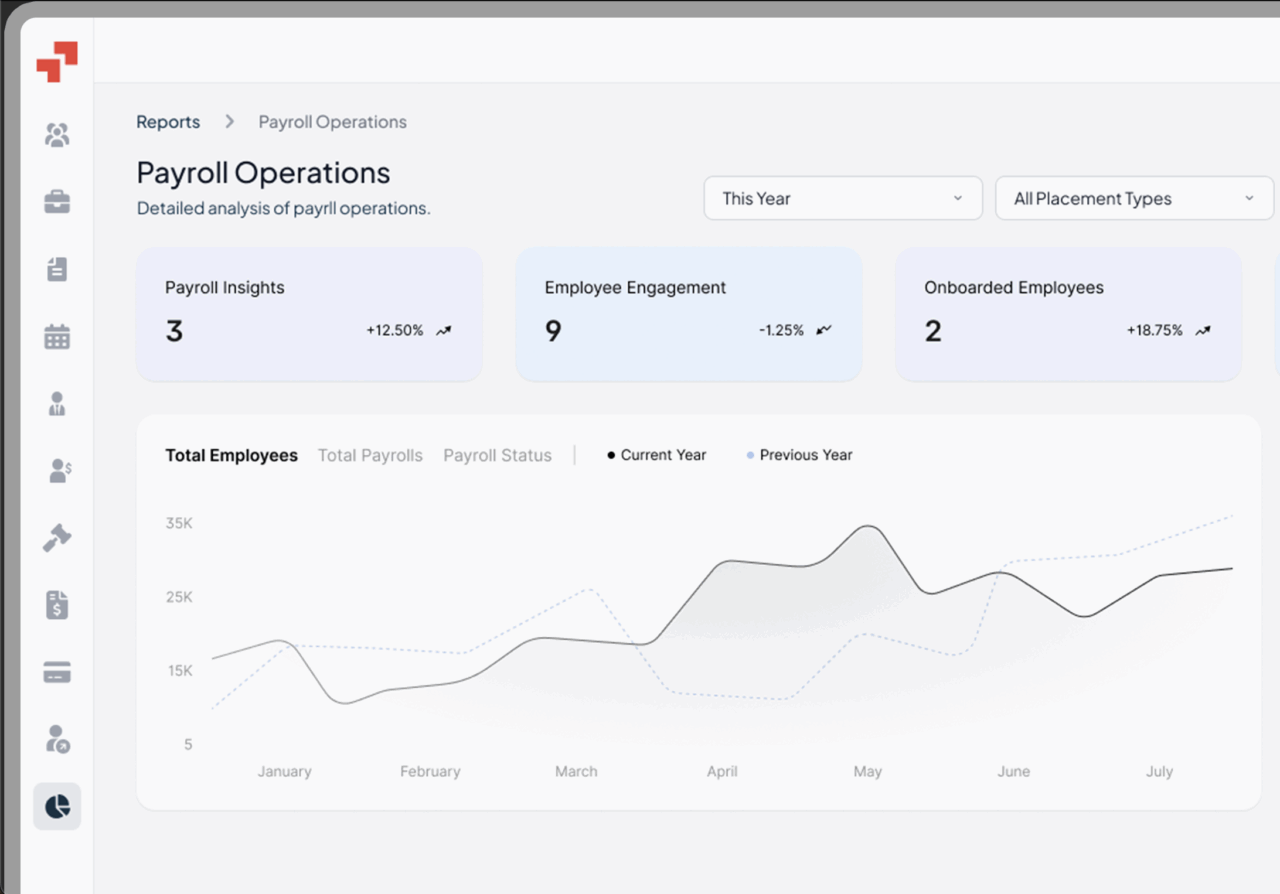Global Workforce GlossaryLabor Law
Related Terms
International Labor Law
HR Compliance
Misclassification
Conditions of Employment
Compliance Risk Management
Expanding a business globally or managing employees locally requires a solid understanding of labor laws. These laws define the standards for wages, working hours, workplace safety, and employee protections. For companies navigating international hiring or U.S.-based compliance, labor laws are essential for reducing legal risks and promoting fair work environments. Understanding these regulations ensures businesses respect employee rights while maintaining smooth operations across borders.
Table of Contents
- What is co-employment?
- What are co-employment laws?
- Why is co-employment a risk?
- What are co-employment rules
- Co-employment do’s and don’ts
- How does co-employment work?
- What is the difference between co-employment and joint employment?
- Co-employment vs PEO
- Co-employment vs employee leasing
- Is co-op considered a full-time employee?
- Is it illegal to work for two jobs in the same industry?
- Co-employment examples
- Practical Case Study Example
- PamGro and Co-employment: Your Global Partner
What are Labor Laws?
Labor laws are legal frameworks that regulate the relationship between employers, employees, and labor unions.
These laws define the employment relationship, establishing the legal connection between employers and employees that determines rights and obligations under labor regulations. They set minimum standards for employment, including wages, hours, working conditions, and the right to unionize. Additionally, they protect the right of employees to engage in collective action to improve working conditions.
Globally, labor laws differ significantly. For example, European countries often have stronger protections around vacation time and parental leave compared to the U.S. Understanding labor laws in every country you operate in is critical, especially when hiring international talent. PamGro simplifies this process by ensuring compliance with local labor laws, regardless of the country your employees are located in.
How Does Labor Law Work?
Labor laws work by establishing baseline standards that employers must follow. These include:
- Labor law requires employers to pay minimum wage and overtime
- Safe working conditions
- Non-discrimination policies
- Unionization rights
Agencies like the DOL monitor compliance and investigate violations. When employers fail to follow labor laws, they may face fines, penalties, or legal action. For international companies, understanding labor laws in multiple jurisdictions can be complex. Compliance is required under both federal and state law, which may have different standards and requirements. This is why working with an EOR like PamGro ensures your business meets all compliance requirements without establishing a legal entity in each country.
What are the Main Types of Labor Laws?
Labor laws can be broadly categorized into:
- Wage and Hour Laws – Govern minimum wage, overtime, and work hours. In the U.S., the Fair Labor Standards Act (FLSA) is a central regulation.
- Workplace Safety Laws – Ensure safe working conditions, primarily enforced through OSHA.
- Anti-Discrimination Laws – Protect employees from discrimination based on race, gender identity, religion, age, or disability, often under the Civil Rights Act. Title VII of the Civil Rights Act of 1964 prohibits most forms of discrimination in employment.
- Union and Collective Bargaining Laws – Protect the statutory rights of employees to organize, form unions, and negotiate employment terms collectively.
State statutes may also regulate labor relations and provide additional protections beyond federal law.
Understanding these types helps businesses craft policies that respect employee rights and avoid legal penalties.
Which Labor Law Is Most Important?
The FLSA is often considered the most important labor law in the U.S. because it establishes the baseline for fair compensation, covering minimum wage, overtime, and child labor restrictions. Other laws like OSHA, the Civil Rights Act, the Age Discrimination in Employment Act, and the National Labor Relations Act are equally important but focus on specific areas such as safety or anti-discrimination.
Employment acts like the Age Discrimination in Employment Act provide foundational workplace protections. The National Labor Relations Act (NLRA) established the National Labor Relations Board (NLRB) to enforce collective bargaining rights and oversee union elections. Businesses must comply with all relevant laws to avoid legal and reputational risks.
Why were Labor Laws Important?
Labor laws emerged to prevent worker exploitation during the industrial revolution. Employees often faced hazardous working conditions, long hours, and unfair pay. Labor laws introduced protections such as:
- Fair wages
- Reasonable work hours
- Safe workplaces
- Right to unionize
Today, these laws ensure a productive and equitable work environment. International companies must understand both local and U.S. labor laws to maintain compliance and employee satisfaction.
What is the Labor Law in the United States?
U.S. labor law is a combination of federal and state regulations. Key federal laws include:
- Fair Labor Standards Act (FLSA) – Minimum wage and overtime.
- Occupational Safety and Health Act (OSHA) – Workplace safety standards.
- National Labor Relations Act (NLRA) – Collective bargaining rights.
- Civil Rights Act of 1964 – Prohibits workplace discrimination.
These laws are enforced by federal agencies such as the Department of Labor and the Equal Employment Opportunity Commission. Violations of labor laws can result in actions brought before federal courts.
State labor laws may provide additional protections, such as higher minimum wages or paid leave mandates. State government agencies administer and enforce state-specific labor regulations. Businesses expanding internationally or hiring remote employees must ensure compliance with both federal and local laws. PamGro helps companies navigate these regulations efficiently, reducing risk and administrative burden.
What are the Main Rights of Employees Under U.S. Labor Laws?
Key employee rights in the U.S. include important legal rights protected by labor laws:
- Fair Compensation – Minimum wage, overtime, and equal pay.
- Safe Workplace – Employers must follow OSHA regulations.
- Freedom to Organize – Employees can form or join unions without retaliation.
- Protection Against Discrimination – Based on race, gender identity, age, religion, or disability.
- Family and Medical Leave – Only eligible employees are entitled to protections under the Family and Medical Leave Act (FMLA).
These rights create a foundation for employee satisfaction, retention, and productivity. Companies leveraging PamGro can ensure their global workforce enjoys comparable protections while staying compliant.
Labor Law vs. Employment Law: How do they Differ
Labor law focuses on collective employment aspects such as unions, collective bargaining, and labor relations. Employment law is broader, covering individual employment contracts, workplace rights, and obligations between employers and employees. Understanding both is critical for international expansion. PamGro ensures that businesses comply with both labor and employment laws when hiring globally, reducing risk and administrative complexity.
What are Illegal Things the Employer Cannot Do?
Most employers are prohibited from the following actions under labor law:
- Discrimination – Treating employees unfairly based on race, gender identity, religion, or age.
- Retaliation – Punishing employees for reporting violations or participating in investigations.
- Misclassifying Employees – Labeling employees incorrectly to avoid overtime pay.
- Ignoring Wage Laws – Failing to pay minimum wage or overtime.
Violation of these rules can result in fines, legal penalties, and reputational damage. Global businesses often rely on EORs like PamGro to prevent such compliance errors when hiring internationally.
How is Labor Law for Salaried Employees and Exempt Employees
Salaried employees can be classified as exempt or non-exempt under the FLSA.
- Exempt Employees – Receive a fixed salary and are not eligible for overtime.
- Non-Exempt Employees – Eligible for overtime pay based on hours worked.
Exempt status depends on job duties and minimum salary thresholds. Misclassification can lead to legal action. PamGro helps businesses classify employees correctly across countries and ensures payroll compliance with local labor regulations.
What are Some Examples of Labor Rights?
Examples include:
- Collective Bargaining Rights – Employees can negotiate terms collectively.
- Family and Medical Leave – Unpaid leave for personal or family medical reasons.
- Workers’ Compensation – Benefits for workplace injuries, including coverage for lost wages due to work-related injuries or illnesses.
- Federal Employee Protections – Special compensation programs and statutory protections exist for federal employees, such as those provided under the Federal Employees’ Compensation Act (FECA).
- Anti-Harassment Protections – Security from harassment and illegal monitoring.
- Privacy Rights – Protection from unwarranted surveillance.
- Benefits – Employee rights under federal law include access to welfare benefit plans, which are regulated to ensure proper funding, disclosures, and fiduciary responsibility.
These rights foster fair, safe, and productive workplaces globally.
Workplace Safety and Health Regulations
Workplace safety and health regulations are a foundational element of labor laws, designed to protect employees from hazards and ensure safe, healthy working conditions. The federal government, primarily through the Occupational Safety and Health Administration (OSHA), establishes and enforces safety standards that most private sector employers and public sector employers must follow.
The Department of Labor, through its Wage and Hour Division, also enforces regulations related to working conditions, including the federal minimum wage, overtime pay, and child labor protections. Labor organizations and labor unions often negotiate collective bargaining agreements that include specific provisions for workplace safety and health, further strengthening protections for employees.
Under federal law, employers must comply with OSHA’s safety and health standards, as well as reporting requirements for workplace injuries and illnesses. Title VII of the Civil Rights Act prohibits employment discrimination based on national origin, gender identity, sexual orientation, and other protected characteristics, ensuring that all employees have equal access to a safe work environment.
In addition to federal laws, state laws and local laws may impose additional or more stringent requirements. Some states operate OSHA-approved state programs with their own safety standards, and others have enacted laws that expand protections against employment discrimination.
If a workplace injury or illness occurs, employees may be entitled to workers’ compensation benefits under federal or state law. Employers are required to follow strict reporting and record-keeping regulations to ensure compliance and support employee welfare.
Practical Example: Labor Law Compliance in Global Hiring
A U.S.-based SaaS company planned to hire developers in India, Germany, and Canada. Each country had different labor laws regarding salaries, benefits, and work hours. By partnering with PamGro as their EOR, the company ensured compliance with local labor regulations, provided employees with proper contracts, benefits, and protections, and avoided fines or misclassification issues. PamGro also helps companies stay updated on new laws that affect global employment, ensuring ongoing compliance as regulations change.
If the company hires foreign workers in the U.S., nonimmigrant visa programs may impose additional labor law requirements that must be met. In cases where multiple entities or staffing agencies are involved, joint employers may share legal responsibilities under labor law. This allowed the company to focus on scaling operations while maintaining legal certainty
How PamGro Supports Labor Law Compliance
PamGro helps businesses hire globally without establishing local entities. PamGro supports compliance for businesses operating in private industries, including those covered by the OSH Act. Most private industries are subject to occupational health and safety regulations, and PamGro ensures compliance with these standards. Key services include:
- Payroll Management – Ensuring salaries comply with local labor laws.
- Benefits Administration – Offering legally mandated benefits in each country, and assisting employers who offer pension and welfare benefit plans in meeting regulatory requirements.
- Employment Contracts – Drafting compliant contracts for all employees.
- Labor Law Guidance – Keeping companies informed about regulatory changes and helping clients understand how the law regulates employers in various jurisdictions.
PamGro also helps clients comply with the OSH Act and maintain safe health conditions for employees, supporting occupational health and safety compliance in private industries.
With PamGro, businesses can focus on growth while staying fully compliant with labor and employment laws worldwide.
Hire the Best Talent, Anywhere






